DC Mogrovejo-Arias
Investigating the resistome of haemolytic bacteria in Arctic soils
Mogrovejo-Arias, DC; Hay, MC; Edwards, A; Mitchell, AC; Steinmann, J; Brill, FHH; Neumann, B
Authors
MC Hay
A Edwards
AC Mitchell
J Steinmann
FHH Brill
B Neumann
Abstract
Microorganisms inhabiting hostile Arctic environments express a variety of functional phenotypes, some of clinical interest, such as haemolytic ability and antimicrobial resistance. We studied haemolytic bacterial isolates from Arctic habitats, assessing their minimum inhibitory concentration (MIC) against antimicrobials. We then performed whole genome sequencing and analysed them for features conferring antimicrobial resistance. MIC data showed that Micromonospora spp. belong to 33% non-wild type (NWT) for erythromycin and penicillin and 22% NWT for tetracycline. Both Pseudomonas spp. belong to 43% NWT for nalidixic acid and streptomycin and 29% NWT for colistin. Finally, the Pedobacter isolate was in 80% NWT for antimicrobials tested. Whole-genome sequencing analyses revealed that fluoroquinolones, tetracyclines, macrolides and penams were the most frequent drug classes against which genotypic resistance was found. Additionally, resistance genes to heavy metals and disinfectants were identified. Our research demonstrates the presence of antimicrobial resistance in bacteria from Arctic habitats and highlights the importance of conservation efforts in these environments, where anthropogenic influence is becoming more evident. Furthermore, our data suggest the possible presence of novel resistance mechanisms, which could pose a threat if the responsible genes are transferable between species or become widespread due to environmental stress and alterations brought about by climate change. The study explored the antimicrobial potential of bacteria isolated from Arctic soil. The findings revealed that these bacteria harbour a multitude of resistance genes against antibiotics and disinfectants. Additionally, the bacteria demonstrated the ability to cause haemolysis and grow at body temperature. With the progression of climate change, bacteria from Arctic environments could pose a significant threat to human health. image
Citation
Mogrovejo-Arias, D., Hay, M., Edwards, A., Mitchell, A., Steinmann, J., Brill, F., & Neumann, B. (2024). Investigating the resistome of haemolytic bacteria in Arctic soils. Environmental Microbiology Reports, 16(5), https://doi.org/10.1111/1758-2229.70028
| Journal Article Type | Article |
|---|---|
| Acceptance Date | Sep 25, 2024 |
| Online Publication Date | Oct 23, 2024 |
| Publication Date | 2024 |
| Deposit Date | Nov 14, 2024 |
| Publicly Available Date | Nov 14, 2024 |
| Print ISSN | 1758-2229 |
| Electronic ISSN | 1758-2229 |
| Publisher | Wiley |
| Peer Reviewed | Peer Reviewed |
| Volume | 16 |
| Issue | 5 |
| DOI | https://doi.org/10.1111/1758-2229.70028 |
| Keywords | ANTIBIOTIC-RESISTANCE GENES; SUSCEPTIBILITY; DIVERSITY |
Files
Investigating The Resistome Of Haemolytic Bacteria In Arctic Soils
(1.8 Mb)
PDF
Licence
http://creativecommons.org/licenses/by/4.0/
Publisher Licence URL
http://creativecommons.org/licenses/by/4.0/
Version
VoR
Downloadable Citations
About RVC Repository
Administrator e-mail: publicationsrepos@rvc.ac.uk
This application uses the following open-source libraries:
SheetJS Community Edition
Apache License Version 2.0 (http://www.apache.org/licenses/)
PDF.js
Apache License Version 2.0 (http://www.apache.org/licenses/)
Font Awesome
SIL OFL 1.1 (http://scripts.sil.org/OFL)
MIT License (http://opensource.org/licenses/mit-license.html)
CC BY 3.0 ( http://creativecommons.org/licenses/by/3.0/)
Powered by Worktribe © 2025
Advanced Search
